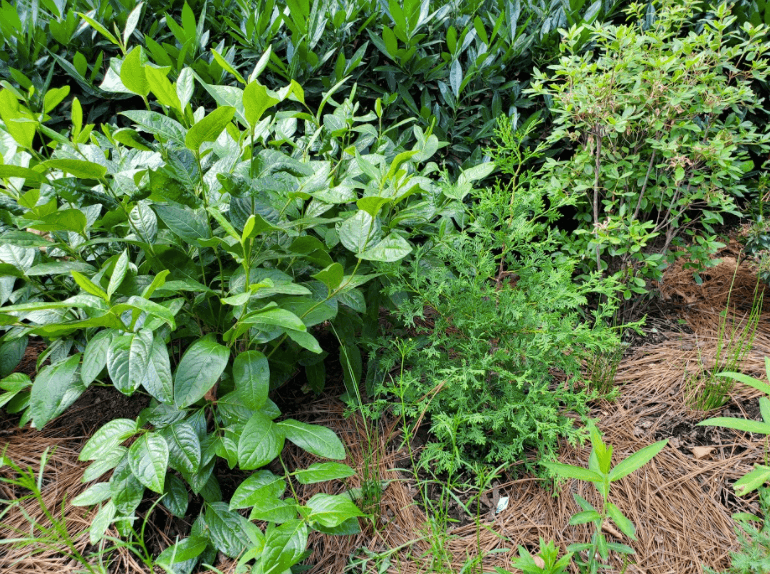This site uses cookies – Learn more.
Curator’s Commentary Part 2: Designing Plants of the Pine Barrens
Curator’s Commentary Part 2: Designing Plants of the Pine Barrens

Last month, I discussed why I wanted to bring awareness to how a simple action like replacing native plants with ornamentals can have a big impact on our ecosystem.
Through my role at the Conservancy, I was surprised to learn that many plants of the Pine Barrens were once native to and around Madison Square Park. Maya Lin’s Ghost Forest is a cautionary tale of decline, but this is also an exhibit of hope. Atlantic white cedar trees once grew in our little park and now they do again after over a century of absence. They can once again attract the attention of Eacles imperialis (the Imperial Moth) and birds such as Orioles, Vireos, and Nuthatches who need this plant to survive. By restoring food and habitat, we can make livable spaces again for wildlife but this takes some work on our part.
We need to accept the beauty of our native plants and depend less on exotic ornamentals to helard in the seasons of our gardens. One fact that is funny to me is that the famous French Gardens of Versailles had entire sections of American natives including many that many Americans mistake for “weeds.” It just shows that no matter where you go, people tend to yearn for a taste of the exotic.
Wild life has evolved to eat only the plants that have evolved with them, so exotic plants provide no benefit despite their ornamental quality. To make matters worse, in places like the Pine Barrens, exotic plants have become invasive opportunists in places where flood waters have caused ghost forest phenomena. This establishment allows them to reproduce and seed in abundance, further crowding out native forest.
This display was designed to replicate micro ecosystems of the Pine Barrens; there are savannahs, forest and swamp ecosystems that are reflected in the plantings and while these plants group themselves naturally in their environments, many can be combined in new arrangements in our home gardens. While these native plants will not bloom as abundantly as annuals and exotics, we can enjoy blueberries, wintergreen, and some secret carnivorous plants tucked in. Oaks and pines make up the backbones of the Pine Barrens and we were sure to include baby specimens of major species that are nestled in our mulch of natural pine straw.
Our plants are smaller than usual in this display even though all of the plants for this exhibition were designed and ordered over in late 2020. So many people have been gardening during the pandemic that there were major shortages of plants this spring. We hope it’s a sign that others have started to appreciate seeing native plants in their own gardens. While this has been slow to start our exhibition, we know that our plants are putting down roots in the park and are growing each and every day.
Plants of the Pine Barrens is on view through October 18, 2021.



